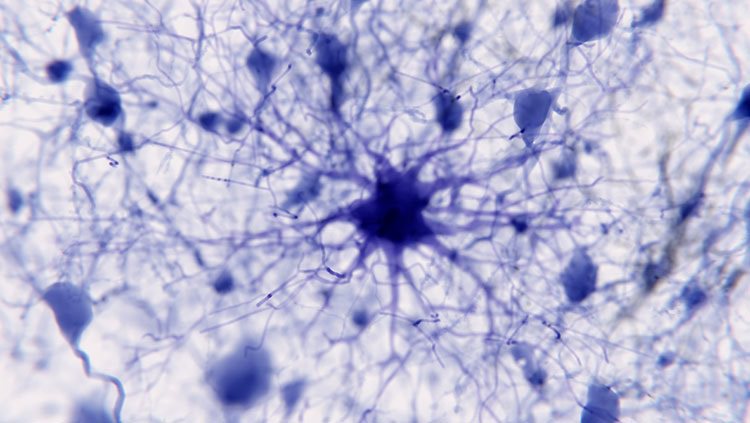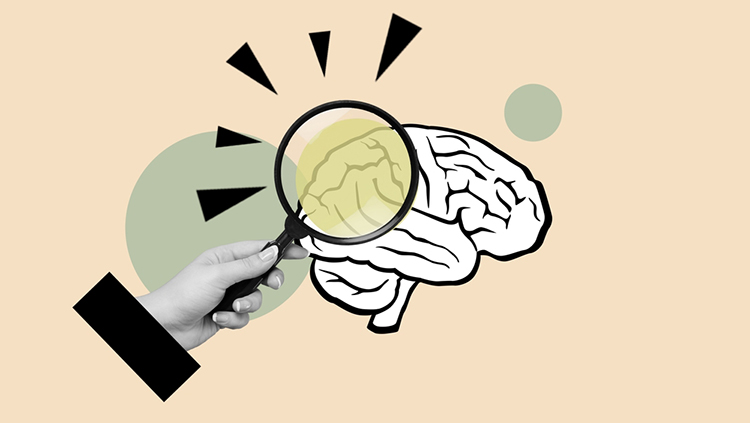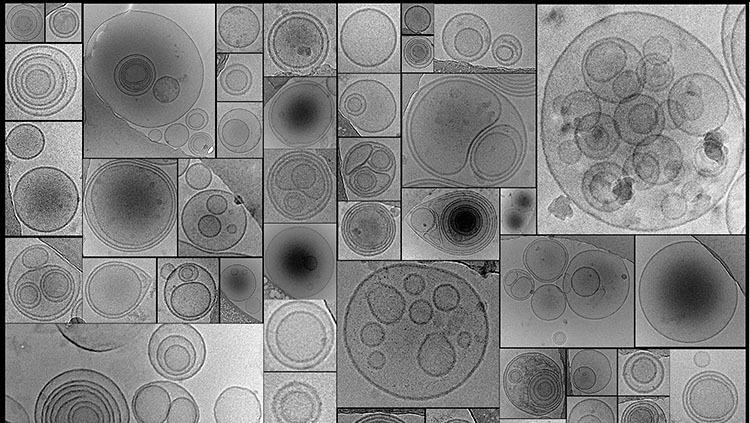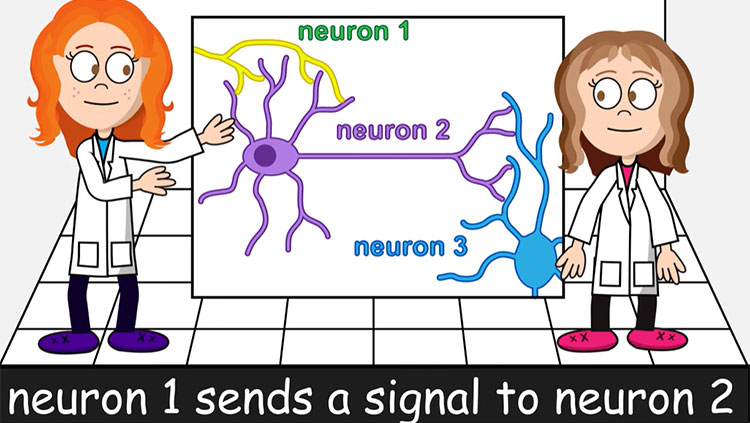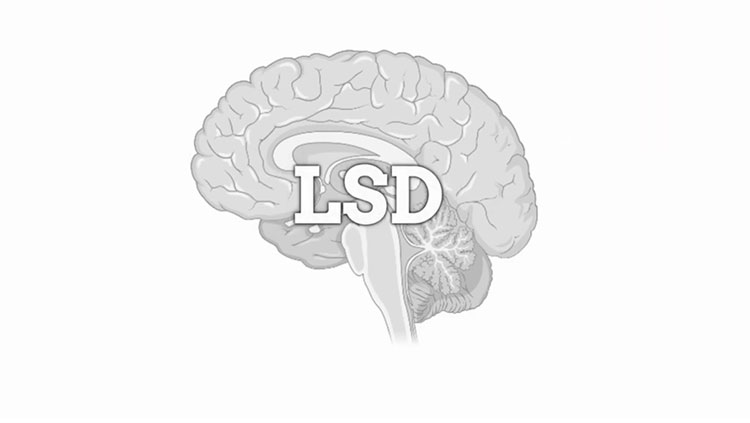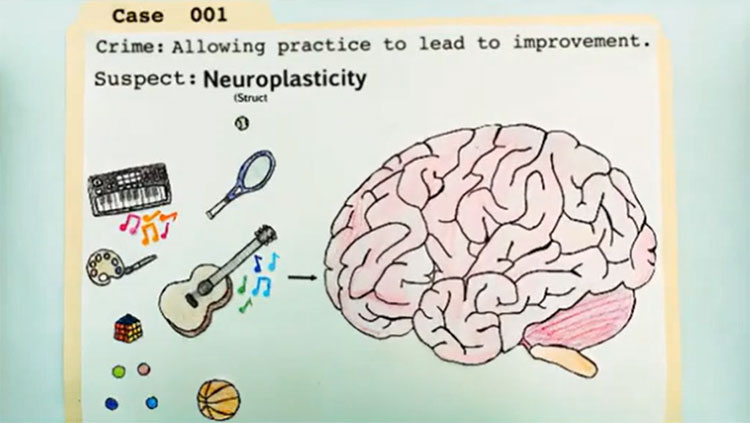Signaling Within Neural Circuits
- Reviewed30 Nov 2022
- Author Diane A. Kelly
- Source BrainFacts/SfN
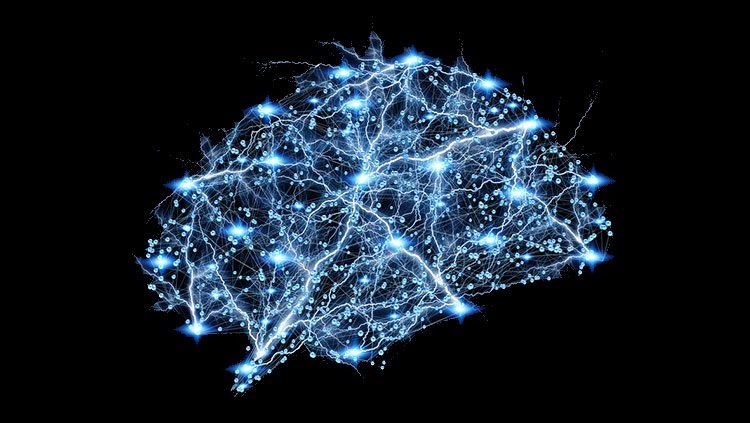
Each region of your brain analyzes only a specialized subset of all the information that is received, but all regions use the same basic mechanism to process information. When signals arrive at a brain region, they engage local neural circuits — interconnected neurons that turn entering signals into output patterns that can be sent to other parts of the brain.
The cerebral cortex is packed with neural circuits. Neurons are organized into a stack of distinct layers that span the thickness of the cortex like shelves in a bookcase. Circuits are arranged in columns, as each neuron forms connections with cells in the layers above and below. The neurons in a column form a single chain, and signals that enter the circuit travel down that chain from one neuron to the next. Each time the signal is fed forward, it is transformed in some way, building outputs that encode complex information — so you can recognize your grandmother’s face in a crowd or plan where to run to catch a thrown ball.
Neuroscientists think each column in the cortex is dedicated to one very specific processing task. But a column’s final output can be influenced by the activity of nearby circuits. Every neuron in a circuit has other connections to neurons in neighboring columns. Since every neuron behaves like a microprocessor, summing all the signals it receives before sending one of its own, the strength of signals from neighboring circuits can dynamically shift a neuron’s response. This dynamic organization may help the brain react flexibly to different situations.
Excitatory and Inhibitory Neuron
Individual neurons are either excitatory or inhibitory. The majority of neurons in your brain — about 80 percent of them — are excitatory, sending signals that push their neighbors toward firing. In many parts of the cerebral cortex, the most common type of excitatory neuron is the pyramidal cell, named for its cone-shaped cell body. Each pyramidal cell has two sets of branched dendrites — one set at the apex and another set of shorter dendrites at the base — that collect signals from neurons in every layer of the cortex. A multi-branched axon sends a single electrical signal to multiple destinations. The 20 percent of your brain’s neurons that are inhibitory send signals that suppress the activity of neighboring neurons and regulate the activity of a circuit.
Every neural circuit contains both excitatory and inhibitory neurons. Neurons that pass signals forward through a circuit and eventually send outputs to other parts of the brain tend to be excitatory, while inhibitory neurons are typically local and often loop their responses back to earlier segments of a circuit. The interplay between these signals in a circuit seems to be important in learning, tuning, and smoothing the signals sent to the body and other parts of the brain. Seizure disorders like epilepsy could be caused by imbalances in the activity of excitatory and inhibitory neurons.
Within circuits, neurons can be organized in a number of different input architectures, each affecting how a circuit manages information. In a feed-forward inhibitory circuit, inhibitory interneurons connect neighboring neural circuits in such a way that excitatory signals in one column simultaneously send inhibitory signals to adjacent columns, reducing their activity. In feedback inhibition, however, neurons send signals to their downstream excitatory neighbors and to interneurons that reach back and inhibit preceding layers of the same circuit. Both are examples of recurrent neural networks, in which neurons inside interconnected circuits send feedback signals to one another.
Adapted from the 8th edition of Brain Facts by Diane A. Kelly.
CONTENT PROVIDED BY
BrainFacts/SfN
References
Albuixech-Crespo, B., López-Blanch, L., Burguera, D., Maeso, I., Sánchez-Arrones, L., et al. (2017). Molecular regionalization of the developing amphioxus neural tube challenges major partitions of the vertebrate brain. PLOS Biology, 15(4): e2001573. https://doi.org/10.1371/journal.pbio.2001573
Barton, R. A., & Venditti, C. (2014). Rapid Evolution of the Cerebellum in Humans and Other Great Apes. Current Biology, 24(20), 2440–2444. https://doi.org/10.1016/j.cub.2014.08.056
Bekkers, J. M. (2011). Pyramidal neurons. Current Biology, 21(24), PR975. https://doi.org/10.1016/j.cub.2011.10.037
Belkhiria, C., Driss, T., Habas, C., Jaafar, H., Guillevin, R., & de Marco, G. (2017). Exploration and Identification of Cortico-Cerebellar-Brainstem Closed Loop During a Motivational-Motor Task: an fMRI Study. The Cerebellum, 16, 326–339. https://doi.org/10.1007/s12311-016-0801-1
Bromfield, E. B., Cavazos, J. E., Sirven, J. I. (2006). An Introduction to Epilepsy, https://www.ncbi.nlm.nih.gov/books/NBK2508/
Carpenter, R., & Reddi, B. (2012). Neurophysiology: A Conceptual Approach, 5th edition. Hodder Arnold: London.
Castro, A., Becerra, M., Manso, M. J., & Anadón, R. (2015). Neuronal organization of the brain in the adult amphioxus (Branchiostoma lanceolatum): A study with acetylated tubulin immunohistochemistry. The Journal of Comparative Neurology, 523(15), 2211–2232. https://doi.org/10.1002/cne.23785
Clarke, L. E., & Barres, B. A. (2013). Emerging roles of astrocytes in neural circuit development. Nature Reviews Neuroscience, 14, 311–321. https://doi.org/10.1038/nrn3484
Fain, G. L., & O’Dell T. J. (2014). Molecular and Cellular Physiology of Neurons, 2nd edition. Harvard University Press: Cambridge.
Forger, N. G. (2016). Epigenetic mechanisms in sexual differentiation of the brain and behaviour. Philosophical Transactions of the Royal Society B: Biological Sciences, 371(1688), 20150114. https://doi.org/10.1098/rstb.2015.0114
Frohlich, F. (2016). Network Neuroscience, 1st edition. Academic Press: London.
Guo, J. U., Ma, D. K., Mo, H., Ball, M. P., Jang, M. H., Bonaguidi, M. A., Balazer, J. A., Eaves, H. L., Xie, B., Ford, E., Zhang, K., Ming, G. L., Gao, Y., & Song, H. (2011). Neuronal activity modifies the DNA methylation landscape in the adult brain. Nature Neuroscience, 14, 1345–1351. https://doi.org/10.1038/nn.2900
Hammond, C. (2014). Cellular and Molecular Neurophysiology, 4th edition. Academic Press.
Human Brain. (2017). Allen Brain Atlas. Allen Institute for Brain Science. https://human.brain-map.org/
Lee, A., Fakler, B., Kaczmarek, L. K., & Isom, L. L. (2014). More Than a Pore: Ion Channel Signaling Complexes. The Journal of Neuroscience, 34(46), 15159–15169. https://doi.org/10.1523/JNEUROSCI.3275-14.2014
Noback, C. R. et al (eds.). (2005). The Human Nervous System: Structure and Function, 6th edition. Humana Press: Totowa NJ.
O'Muircheartaigh, J., Keller, S. S., Barker, G. J., & Richardson, M. P. (2015). White Matter Connectivity of the Thalamus Delineates the Functional Architecture of Competing Thalamocortical Systems. Cerebral Cortex, 25(11), 4477–4489. https://doi.org/10.1093/cercor/bhv063
Peer, M., Nitzan, M., Bick, A. S., Levin, N., & Arzy, S. (2017). Evidence for Functional Networks within the Human Brain's White Matter. The Journal of Neuroscience, 37(27), 6394–6407. https://doi.org/10.1523/JNEUROSCI.3872-16.2017
Pyka, M., & Cheng, S. (2014). Pattern Association and Consolidation Emerges from Connectivity Properties between Cortex and Hippocampus. PLOS ONE, 9(1), e85016. https://doi.org/10.1371/journal.pone.0085016
Saladin, K. (2015). Anatomy & Physiology: The Unity of Form and Function, 7th edition. McGraw Hill: New York.
Schneider, G. E. (2014). Brain Structure and its Origins: in Development and in Evolution of Behavior and the Mind. MIT Press: Cambridge.
Sheng, M., Kim, E. (2011). The postsynaptic organization of synapses. Cold Spring Harbor Perspectives in Biology, 3(12), a005678. https://pubmed.ncbi.nlm.nih.gov/22046028
Sporns, O. (2013). Structure and function of complex brain networks. Dialogues in Clinical Neuroscience, 15(3), 247–262. https://doi.org/10.31887/DCNS.2013.15.3/osporns
Verberne, A. J., Sabetghadam, A., & Korim, W. S. (2014). Neural pathways that control the glucose counterregulatory response. Frontiers in Neuroscience, 8(38). https://doi.org/10.3389/fnins.2014.00038
Wells, R. B. (2005). Cortical Neurons and Circuits: A Tutorial Introduction. https://webpages.uidaho.edu/rwells/techdocs/Cortical%20Neurons%20and%20Circuits.pdf
What to Read Next
Also In Cells & Circuits
Trending
Popular articles on BrainFacts.org



